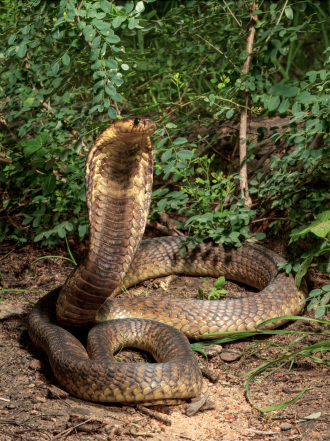Media release
From:
Biology: New antivenom protects against snake bites (N&V)
An experimental recombinant antivenom to protect against bites from some of Africa’s deadliest snakes—including mambas, cobras, and rinkhals—has shown promise in treating mice. The findings, published in Nature, may contribute to the development of safer and more effective treatments for snakebite victims.
Bites from venomous snakes are a major health problem in sub-Saharan Africa, causing thousands of deaths and serious injuries every year. Current antivenoms are made from animal blood plasma and can be expensive, inconsistent, and sometimes cause adverse reactions. They also often fail to work against all medically relevant snake species or prevent severe tissue damage.
Andreas Laustsen and colleagues created a new antivenom by combining engineered proteins called nanobodies that target key toxins found in snake venoms. These nanobodies were identified after immunizing an alpaca and a llama with venoms from 18 African snake species, including cobras, mambas and a rinkhals. In mice, the antivenom prevented death from bites from 17 of these snake species and reduced tissue damage caused by some of the most harmful venoms. It also performed better than an existing commercial antivenom, Inoserp PAN-AFRICA, in preventing death and skin necrosis across all of the snake species tested but was only partially protective against venom from green and black mambas.
The findings suggest that broad snakebite protection can be achieved with only a few components, challenging the belief that mixtures of a large number of antibodies are needed. Future research will focus on improving the antivenom’s durability and testing its safety in clinical settings, the authors suggest.
Multimedia







 International
International
![[cropped] Emerald Gaze: A close encounter with the intense stare of a green mamba (Dendroaspis angusticeps), revealing the intricate scales and vivid hue of this elusive forest predator. Credit: Wolfgang Wüster](https://www.scimex.org/__data/assets/image/0011/1192538/Green-mamba-Copy.png)


